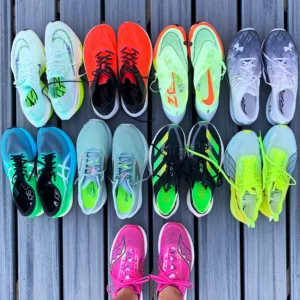The Beginner’s Guide to start running
Just about 3years ago, after First wave of Covid in July 2020 I embarked on motivational relationship of my life — with running, I was initially unaware of what a running routine might look like in practice. (Consistency would be the key word.) Despite many threats to quit, over time I noticed improvements to my endurance, speed, and overall mood. Nearly 3 years later, I’m the one who had ran two full marathons, few half marathons and can run 50KM in a week and encourages friends to consider an easy jog a few times a week.
The beauty of the sport is its relatively low barrier to entry Just a few minutes of running a day substantially reduces the risk of cardiovascular diseases, improve mental health,mood and sleep quality “I think that’s a great thing about running: It doesn’t have a prerequisite
Before you hit the streets, the trails, the track, or the treadmill, there are a few things you should keep in mind to ensure you’re staying safe and prepared, mentally and physically.
Before you start
Prior to your first run, take stock of where you are health-wise, Many Running coaches suggests to build a base of comfortably walking for two to three miles before any running is introduced. If you experience any pain in your knees, hips, shins, or feet while walking, running will likely exacerbate the issues, so first get checked out by a physical therapist or sports medicine specialist.
Getting clearance from your primary care doctor to run is a good idea, but it can sometimes backfire for fat people. it’s very common that the doctor will say, ‘Well, you need to lose weight before you start running.
Start with a sports doctor first if you’re experiencing any pain while walking, but if not, you should be good to start adding some running into the mix.
What all You Need to Start
Running is relatively low maintenance in terms of gear. One piece of equipment deserving of time and attention, though, is your shoes. It’s always appealing to go with the pricy nice looking branded shoes,But sometimes it’s not the right shoe for you.”
It is good to visit a specialty running store to have your “gait” which means — how your legs move while running — evaluated and to try shoes recommended based on your body and support needs.
A good pair of shoes can be the difference between a successful start to the sport and suffering with shin splints. Most stores will allow you to run in each pair of shoes for a few minutes either on a treadmill in the store or on the street or in the parking lot before you purchase them, and many have a generous return policy if you decide they’re not for you. So take your time, choose the shoe based on how it feels and not how it looks or the size.
Set some goals
Aiming for certain achievements or milestones can help you stay motivated by giving you something to work toward. Goals can range from running a certain distance to jogging for a specific amount of time without taking a break.
It can be helpful to set both “process goals” and “outcome goals.” Outcome goals are big picture:“ Like “I want to run a mile in 10 minutes.” Process goals focus on the experience of running. What are you trying to get out of your runs? This can be as simple as “I’m really stressed out from work and I need something that I can blow off steam” or “I find on the days that I go for a run I sleep better at night.” “Focusing on really tiny short-term goals where you actually do feel the effects,” “is what’s going to allow you to stay in it long enough that you will achieve the longer-term goal.”
Like i set goal to complete Procam slam 2023 cycle so that I have motivation to Continue with my running throughout the whole year with some target in mind
Getting going
A common misconception among new runners is the notion that in order to successfully run, you must not focus on FAST, Coaches are huge proponents of a run-walk plan to start where you jog comfortably (not a sprint!) for 30 seconds, then walk for a minute, then repeat for 20 minutes or so. You can play with the duration of the running and walking segments based on how you feel. Maybe you can run for three minutes and walk for one and then bump up to five minutes of running. Running a mile if you’ve never run a mile before in your life is not an easy thing to do and it’s not something that we just expect you to all of a sudden be able to do.
Instead of focusing on distance and speed, start by being intentional about how many days you’d like to run,. Running based on effort instead of time can help you determine what feels manageable for your body. Then, once you feel strong after a few weeks of, say, three run-walks a week, you can start to slightly increase the distance of those runs. After that, you can consider upping your pace if getting faster is one of your goals. It’s more about focusing on one thing at a time so you don’t hurt yourself or overwhelm yourself.
When you want to quit
Even the most experienced athletes struggle with dips in motivation and progress. To help get through those mornings when you’d rather be sleeping than working out, Angie recommends paying attention to how you feel when you’re done running. Let the sense of accomplishment fuel you.
Acknowledging the physically demanding aspects of running is natural — running requires effort, after all! But when “This is hard” morphs into defeating self-talk, it’s time to reframe your inner monologue. Be your own hype person and focus on how far you’ve come and how amazing your body is for doing this, a mantra during a workout or a race to stay mentally grounded: “I belong” or “I know this is going to be hard but I can do this. I’ve done it before and I’ll do it again.”
There will be days when you miss a run or don’t hit a goal, which can be a blow to your confidence. Life happens: Days are busy, the weather can be less than hospitable, or you might not be in the mood. That’s fine. Remember, rest days are essential, as is not getting down on yourself if progress comes more slowly than you hoped. Deviation from a plan or preconceived notion of what a runner “should” be is not admitting defeat. The whole point is to try something new and get better.
You may feel compelled to compare yourself to other runners, curious how your times, distances, and body stack up to others , The false narratives created when equating yourself to other athletes — I’m not fast enough, I don’t have a “runner’s body” — can lead you to think you’re not worthy of considering yourself a runner. Nip these unhelpful thoughts in the bud and remember you’re running for you and not for anyone else. “If you run, you are a runner and if you are a runner who has a body, that is a runner’s body.
Similarly, runners of all levels, especially women, may experience external concerns in the form of harassment. When someone makes an inappropriate comment about your body or appearance, “it’s very easy to make it mean something about yourself , I shouldn’t be out here, I look terrible in my running clothes, I’m so slow.” Easier in concept than in practice, remember that you can’t control others’ opinions or actions, only your own reaction. I don’t let any of that kind of stuff interfere with my running.
Tips to make Running a habit
Having a support system can make a solitary sport more communal. Local running stores often host group runs; if they don’t, you can ask the associate who helped fit you for shoes if they know of any groups. Many running groups have a social media presence, so do a little sleuthing on Instagram or Facebook by searching for “running clubs” and your city or town.
Adding a social component to your runs helps you meet others in your community and provides validation and solidarity when your motivation is lagging: people to complain with, people to rejoice with, people to get a pizza with after a tough workout. “Maybe you’re not super excited about going out and running three or four miles,”“but you’re excited about the people that you’ve been becoming friends with.”
When you’re first embarking on a running practice, it’s easy to feel like your goals are unreachable. Process goals give you periodic reminders to celebrate the progress you’ve made. Run a mile for the first time? Jogged for 15 minutes straight without walking? “Do something nice for yourself!” “Find those small wins because running is so temperamental. There could be a good day, then there’s a bad day right after it, then you’re back to a good day. So I think you’ve got to find the reasons to celebrate.”
Sometimes even the biggest wins, the most supportive crews, or the best-fitting shoes don’t make running fun. That’s fine. If you’re actively dreading your runs and genuinely feel like the sport isn’t for you, it’s okay to move on. But, if you’re frustrated you aren’t reaching your goals as quickly as you’d like, “Running rewards consistency, So if you want to become a better runner, know that it’s available for you with some patience, with some grace, with consistency, and hard work.”


